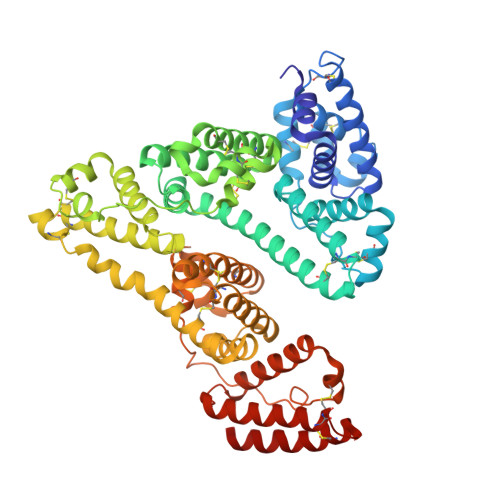Structural basis of non-steroidal anti-inflammatory drug diclofenac binding to human serum albumin.
Zhang, Y., Lee, P., Liang, S., Zhou, Z., Wu, X., Yang, F., Liang, H.(2015) Chem Biol Drug Des 86: 1178-1184
- PubMed: 25958880
- DOI: https://doi.org/10.1111/cbdd.12583
- Primary Citation of Related Structures:
4Z69 - PubMed Abstract:
Human serum albumin (HSA) is the most abundant protein in plasma, which plays a central role in drug pharmacokinetics because most compounds bound to HSA in blood circulation. To understand binding characterization of non-steroidal anti-inflammatory drugs to HSA, we resolved the structure of diclofenac and HSA complex by X-ray crystallography. HSA-palmitic acid-diclofenac structure reveals two distinct binding sites for three diclofenac in HSA. One diclofenac is located at the IB subdomain, and its carboxylate group projects toward polar environment, forming hydrogen bond with one water molecule. The other two diclofenac molecules cobind in big hydrophobic cavity of the IIA subdomain without interactive association. Among them, one binds in main chamber of big hydrophobic cavity, and its carboxylate group forms hydrogen bonds with Lys199 and Arg218, as well as one water molecule, whereas another diclofenac binds in side chamber, its carboxylate group projects out cavity, forming hydrogen bond with Ser480.
Organizational Affiliation:
Key Laboratory of Ecology of Rare an Endangered Species and Environmental Protection, Ministry of Education of the People's Republic of China, Guangxi Normal University, Guilin, Guangxi, China.

















